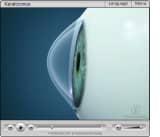Ocular Hypertension
Ocular hypertension is an increase in the pressure in your eyes that is above the range considered normal with no detectable changes in vision or damage to the structure of your eyes. The term is used to distinguish people with elevated pressure from those with glaucoma, a serious eye disease that causes damage to the…
Retinitis Pigmentosa
Retinitis pigmentosa (RP) is a group of inherited diseases that damage the light-sensitive rods and cones located in the retina, the back part of our eyes. Rods, which provide side (peripheral) and night vision are affected more than the cones that provide color and clear central vision. Signs of RP usually appear during childhood or…
Keratoconus
Keratoconus is a vision disorder that occurs when the normally round cornea (the front part of the eye) becomes thin and irregular (cone) shaped. This abnormal shape prevents the light entering the eye from being focused correctly on the retina and causes distortion of vision. In its earliest stages, keratoconus causes slight blurring and distortion…
Conjunctivitis
Conjunctivitis is an inflammation of the conjunctiva, the thin, transparent layer that lines the inner eyelid and covers the white part of the eye. The three main types of conjunctivitis are infectious, allergic and chemical. The infectious type, commonly called “pink eye,” is caused by a contagious virus or bacteria. Your body’s allergies to pollen,…
Anterior Uveitis
images/mp3/anterior.mp3 Anterior uveitis is an inflammation of the middle layer of the eye, which includes the iris (colored part of the eye) and adjacent tissue, known as the ciliary body. If untreated, it can cause permanent damage and loss of vision from the development of glaucoma, cataract or retinal edema. It usually responds well to…
Blepharitis
Blepharitis is defined as inflammation of the eyelids and eyelashes. Symptoms include red, irritated, itchy eyelids. You may even notice crusting around the eyelashes that resembles dandruff. It is a very common problem that can be caused by bacterial infections, certain skin conditions like acne rosacea, and demodex infestation. While blepharitis is generally not considered…
Dry Eye
Your eyes produce a very complex tear that is necessary to protect your eye health as well as provide the clear optical surface needed for sharp vision. In most cases, a diagnosis of dry eye disease (DED) does not mean you are not producing enough tears. Instead, it is usually a change in the composition…
Cataract
A cataract is a cloudy or opaque area in the normally clear lens of the eye. Depending on its size and location, it can interfere with normal vision. Most cataracts develop in persons over age 55, but they occasionally occur in infants and young children. Usually people develop cataracts in both eyes, but one eye…
Macular Degeneration
View Video Macular degeneration is the leading cause of blindness in America. It results from changes to the macula, a portion of the retina that is responsible for clear, sharp vision, and is located at the back of the eye. Most people with macular degeneration have the dry form, for which there is…
Diabetic Retinopathy
Diabetes is a disease that interferes with the body’s ability to use and store sugar and can cause many health problems. One, called diabetic retinopathy, can weaken and cause changes in the small blood vessels that nourish your eye’s retina, the delicate, light sensitive lining of the back of the eye. These blood vessels may…
Glaucoma
Glaucoma is an eye disease in which the internal pressure in your eyes increases enough to damage the nerve fibers in your optic nerve and cause vision loss. The increase in pressure happens when the passages that normally allow fluid in your eyes to drain become clogged or blocked. The reasons that the passages become…
Retinoblastoma
images/mp3/retinoblastoma.mp3 Every parent dreads to hear the word “cancer,” but cancer has a high prevalence in the United States. Early detection of cancer can greatly reduce the severity of the illness and increase life expectancy. Optometrists diagnose, refer, and comanage cancers that involve the eye area. The most common cancer involving the eye in young…
Acanthamoeba
Acanthamoeba is one of the most ubiquitous organisms in the environment, but rarely causes infections. When infection does occur, however, it can be extremely serious and vision threatening. Recently, there have been multiple reports of increasing incidence of Acanthamoeba keratitis. Co-infection with a bacterial keratitis is common both in the contact lens case and on…
Eye Coordination
Eye coordination is the ability of both eyes to work together as a team. Each of your eyes sees a slightly different image and your brain, by a process called fusion, blends these two images into one three-dimensional picture. Good eye coordination keeps the eyes in proper alignment. Eye coordination is a skill that must…
Color Deficiency
images/mp3/color_def.mp3 Color vision deficiency means that your ability to distinguish some colors and shades is less than normal. It occurs when the color-sensitive cone cells in your eyes do not properly pick up or send the proper color signals to your brain. About eight percent of men and one percent of women are color deficient.…
Spots and Floaters
Spots (often called floaters) are small, semi-transparent or cloudy specks or particles within the vitreous, which is the clear, jelly-like fluid that fills the inside of your eyes. They appear as specks of various shapes and sizes, threadlike strands or cobwebs. Because they are within your eyes, they move as your eyes move and seem…
Strabismus
Strabismus occurs when one or both of your eyes turns in, out, up or down, and is usually caused by poor eye muscle control. This misalignment often first appears before age 21 months but may develop as late as age 6. This is one reason why the American Optometric Association recommends a comprehensive optometric examination…
Amblyopia
images/mp3/amblyopia.mp3 Lazy eye, or amblyopia, is the loss or lack of development of central vision in one eye that is unrelated to any eye health problem and is not correctable with lenses. It can result from a failure to use both eyes together. Lazy eye is often associated with crossed-eyes or a large difference in…
Astigmatism
Astigmatism is a vision condition that causes blurred vision due either to the irregular shape of the cornea, the clear front cover of the eye, or sometimes the curvature of the lens inside the eye. An irregular shaped cornea or lens prevents light from focusing properly on the retina, the light sensitive surface at the…
Presbyopia
Presbyopia is a vision condition in which the crystalline lens of your eye loses its flexibility, which makes it difficult for you to focus on close objects. Presbyopia may seem to occur suddenly, but the actual loss of flexibility takes place over a number of years. Presbyopia usually becomes noticeable in the early to mid-40s.…












